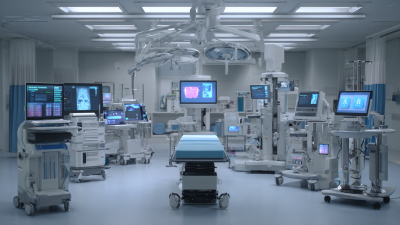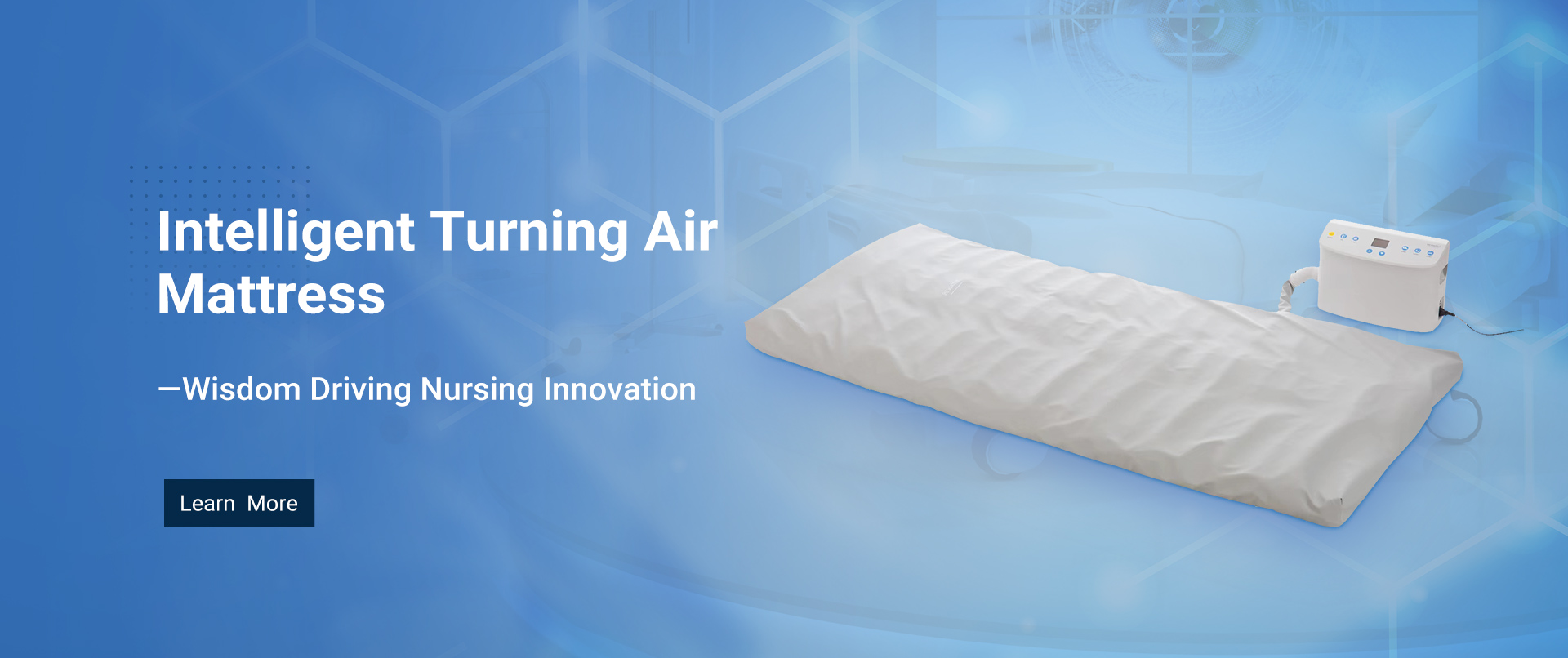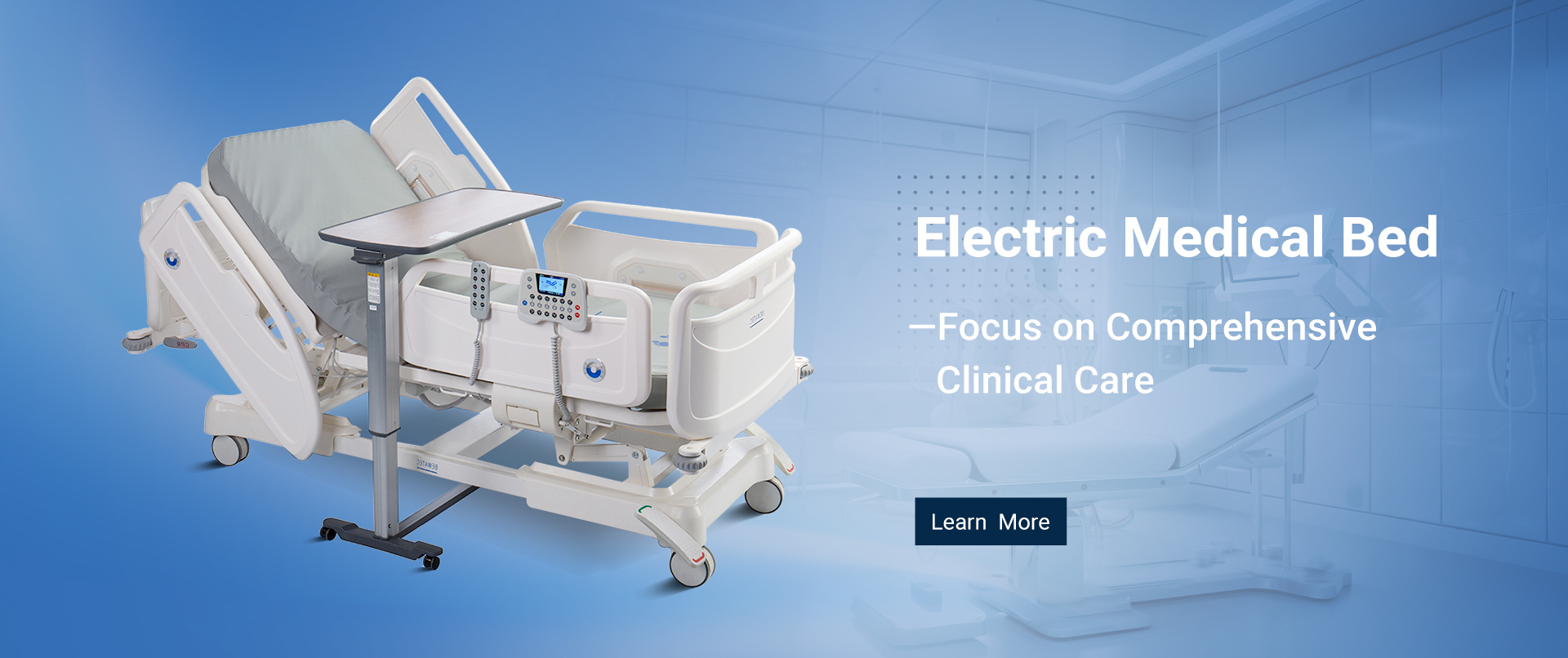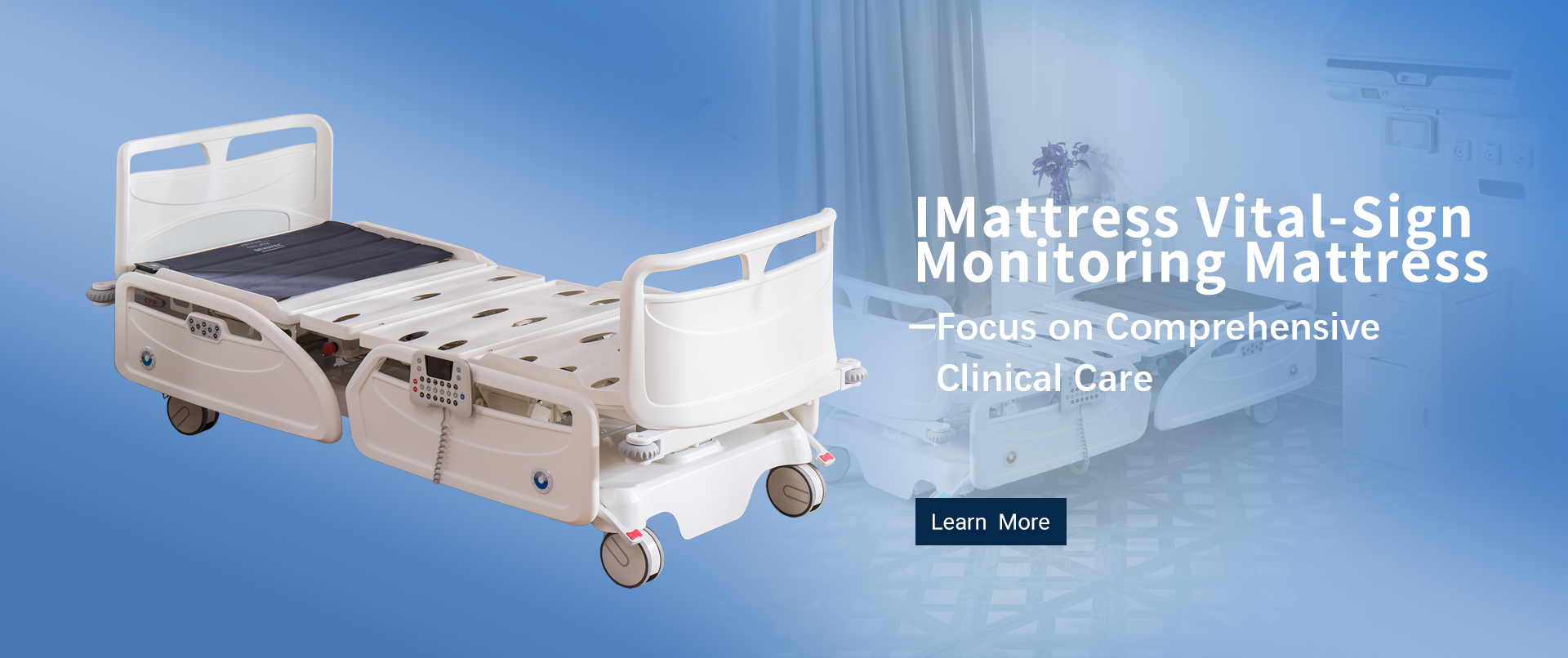
How to Choose the Right Hospital Mattress for Optimal Patient Comfort and Recovery
Table of Contents
- Understanding Different Types of Hospital Mattresses and Their Features
- Assessing Patient Needs: Factors to Consider When Choosing a Mattress
- Evaluating Mattress Materials for Comfort and Durability
- Importance of Pressure Relief in Hospital Mattresses for Patient Recovery
- Maintenance and Care Tips for Hospital Mattresses to Ensure Longevity
- Exploring the Impact of Functional Design on Patient Recovery: A Data-Driven Analysis of Stylish Bedside Tables in Hospitals
- FAQS
- Conclusion
- Related Posts
When it comes to caring for patients, let’s be honest — the right mattress in a hospital really makes a difference. A good hospital mattress isn't just about comfort; it can actually help folks recover quicker and even improve their overall health outcomes.
Bewatec (Zhejiang) Medical Device Co., Ltd. is really leading the charge here, especially as they push forward with digital tools to transform healthcare worldwide. They’re all about creating smart medical solutions that offer personalized, safe care every step of the way.
Since we all know that a comfy, supportive mattress plays a huge part in helping patients sleep better and prevent pressure ulcers, this guide will cover what to think about when picking the right hospital mattress. It’s all part of Bewatec’s bigger goal of changing patient care for the better — showing just how important innovation is when it comes to making patients happier and helping them recover faster.

Understanding Different Types of Hospital Mattresses and Their Features
When you're picking out a hospital mattress, it’s pretty important to understand the different types out there and what they do. Knowing this can make a big difference in how comfortable a patient feels and how well they recover. Did you know that the global market for hospital beds was valued at around $3.39 billion in 2021? Experts are expecting it to almost double by 2031, hitting about $7.15 billion, with a growth rate of roughly 7.4% from 2022 onward. That really shows how much folks are realizing the importance of comfy, effective mattresses in hospitals.
So, there are a few main types—like foam, gel, and air-filled mattresses. Foam ones are great for pressure relief and give good support. Gel mattresses tend to stay cooler, which can be a lifesaver for patients sensitive to temperature changes. And air-filled mattresses can be adjusted to the right firmness, which is especially useful in preventing bedsores. Choosing the right one really depends on the patient’s needs—stuff like mobility, weight, or if they’re at risk of developing bedsores.
A couple of tips: When you’re picking a mattress, think about the patient’s medical condition and any special needs they might have. Also, it's a good idea to check how durable the mattress is and how easy it is to clean—hospitals need to keep everything super hygienic. And don’t forget, chatting with healthcare professionals can give you some helpful guidance to make sure you pick something that really helps with healing and comfort.
How to Choose the Right Hospital Mattress for Optimal Patient Comfort and Recovery
| Mattress Type | Material | Pressure Relief | Support Level | Temperature Regulation | Durability |
|---|---|---|---|---|---|
| Gel Mattress | Gel-infused foam | High | Medium | Yes | 5-7 years |
| Air Mattress | Air-filled chambers | Very High | Adjustable | Yes | 3-5 years |
| Foam Mattress | Memory foam | Medium | Medium to High | Limited | 5-10 years |
| Hybrid Mattress | Foam and innerspring | High | High | Yes | 8-12 years |
Assessing Patient Needs: Factors to Consider When Choosing a Mattress
When you're choosing the right hospital mattress, it's really important to think about what the patient actually needs. You know, like their specific medical condition. For example, if someone has pressure sores, they’d probably need a special kind of mattress that helps shift weight around and takes some pressure off those sore spots. On the other hand, someone who's just had surgery might do better with a firmer surface that supports their body and makes it easier for them to move around.
Another thing to keep in mind is how mobile the patient is. If they can’t move much on their own, then a mattress with adjustable firmness or one that has some tech for repositioning could make a huge difference in comfort and also help with their care. Plus, considering how easy it is to clean and keep infection-free is super important — hospitals gotta stay hygienic, after all. And don’t forget about comfort — a mattress that can help regulate body temperature really helps with healing and just makes the whole experience a lot better for the patient. So, by taking all these factors into account, healthcare providers can make smarter choices that really support their patients’ recovery and well-being.

Evaluating Mattress Materials for Comfort and Durability
Picking out the right hospital mattress isn't just about comfort — it's about making sure it’s also durable and suited for the patient’s needs. Different materials can really vary in how they support, relieve pressure, and handle temperature, so it’s a good idea to get familiar with what each offers. For example, memory foam molds to the body, providing pretty awesome pressure distribution, while latex mattresses are super resilient and breathable — helping keep patients cool and comfy.
Here’s a little tip: when you're checking out mattress materials, think about how they hold up under different conditions. You’ll want something that resists moisture since keeping things hygienic is a must to prevent infections. Also, look for mattresses with removable and washable covers — trust me, they make life so much easier when it comes to cleaning. And don't forget to see if the mattress has any certifications showing it meets health and safety standards; that’s a good sign you're making a safe choice for recovery.
Durability’s another biggie. You want a mattress that can stand the test of time and repeated use without losing its comfort. High-density foam or hybrid types often hit that sweet spot of comfort and longevity. Plus, if you choose materials with antimicrobial properties, it can help avoid odors and bacteria buildup — making the whole recovery space healthier for everyone.
Hospital Mattress Material Comparison: Comfort and Durability
This chart compares various mattress materials used in hospitals based on their comfort and durability ratings, providing insights for optimal patient comfort and recovery.
Importance of Pressure Relief in Hospital Mattresses for Patient Recovery
 Picking the right hospital mattress really makes a big difference when it comes to patient comfort and recovery. You see, pressure relief is super important because many patients spend a long time in bed and are at risk of developing pressure ulcers—those painful sores that can even become dangerous if not caught early. A mattress that’s designed with pressure-relief features, like gel-infused layers, air systems, or memory foam, helps spread out weight more evenly. That way, it reduces those annoying pressure points that can damage the skin and tissues underneath.
Picking the right hospital mattress really makes a big difference when it comes to patient comfort and recovery. You see, pressure relief is super important because many patients spend a long time in bed and are at risk of developing pressure ulcers—those painful sores that can even become dangerous if not caught early. A mattress that’s designed with pressure-relief features, like gel-infused layers, air systems, or memory foam, helps spread out weight more evenly. That way, it reduces those annoying pressure points that can damage the skin and tissues underneath.
Honestly, the quality of the mattress can directly impact how well a patient recovers. When someone’s comfortable, they’re more likely to be satisfied with their care and might even bounce back quicker. Less discomfort means they’re more willing to participate in rehab activities, which, let’s face it, can really speed things up. So, choosing a mattress that focuses on relieving pressure isn’t just a small detail—it can make a huge difference for both physical healing and overall well-being during that tough recovery period.
Maintenance and Care Tips for Hospital Mattresses to Ensure Longevity
Taking good care of hospital mattresses really matters if we want them to last longer and do their job in keeping patients comfortable and aiding recovery. It's a good idea for caregivers to check on them regularly — look out for any tears, stains, or flattened spots, because those can mess with comfort and cleanliness. Using protective covers can be a lifesaver, preventing spills and germs from sinking in and helping the mattress last longer. And don’t forget to stick to the manufacturer’s instructions when cleaning, making sure to use disinfectants that won’t damage the mattress material.
On top of those inspections, it’s helpful to rotate and flip the mattress as suggested. That way, wear gets spread out evenly, and patients won’t have to deal with lumpy or uneven surfaces. Also, making sure the mattress gets aired out and stays dry is key — mold and mildew aren’t welcome guests. Hospitals should set up a proper schedule for replacing mattresses based on how often they’re used and their condition, so every patient gets the support and hygiene they deserve. Following these simple tips can really extend the life of the mattresses and, more importantly, make a real difference in how comfy and effective the beds are during recovery.
Exploring the Impact of Functional Design on Patient Recovery: A Data-Driven Analysis of Stylish Bedside Tables in Hospitals
In recent years, the healthcare industry has increasingly recognized the pivotal role of functional design in patient recovery, particularly concerning the aesthetics and functionality of hospital furniture. Stylish bedside tables, for instance, are no longer merely practical items; they have become essential components of a healing environment. According to a study published in the Journal of Patient Experience, environments that incorporate pleasant aesthetics can lead to a 25% improvement in patient satisfaction scores. This improvement underscores the importance of integrating design principles that align with patient needs and preferences.
When selecting bedside tables, healthcare facilities are now opting for products that are not only visually appealing but also lightweight and sturdy. Furniture that combines these features can significantly enhance patient mobility and access to personal items, fostering a sense of independence during recovery. A lightweight design makes it easier for healthcare staff to rearrange and clean spaces, contributing to operational efficiency. In fact, a report from the Center for Health Design revealed that hospitals prioritizing such multi-functional furniture have experienced a 15% reduction in cleaning times, allowing staff to focus more on patient care.
Moreover, the structural robustness of bedside tables ensures that they can withstand the rigors of a hospital environment, supporting the diverse needs of patients without compromising safety. For instance, tables designed with durable materials can accommodate heavier medical devices and personal belongings. The combination of these factors—esthetic appeal, lightweight nature, and sturdy construction—ultimately plays a crucial role in creating a hospital atmosphere that promotes recovery and well-being.
FAQS
: It is essential to assess patient needs, including their medical condition, mobility level, ease of maintenance, and thermal regulation properties.
Different conditions require different types of support; for example, patients with pressure ulcers may need pressure-relief mattresses, while post-surgery patients may need firmer surfaces for better support.
Patients with limited mobility may benefit from mattresses that have adjustable firmness or advanced positioning technology to enhance comfort and facilitate care.
The mattress should be easy to clean and maintain to ensure hygiene and prevent infections, which are critical in a hospital setting.
Pressure relief is crucial for preventing pressure ulcers in immobile patients, reducing pain, and improving overall recovery outcomes.
Gel-infused mattresses, air-filled systems, and memory foam mattresses are designed to distribute weight evenly and minimize pressure points.
Enhanced comfort can lead to higher patient satisfaction, promote engagement in rehabilitation activities, and potentially expedite the recovery process.
Maintaining proper body temperature is vital for healing and overall patient comfort, affecting the recovery experience.
Advanced technologies such as pressure-relief materials and adjustable firmness features enhance patient comfort and support recovery.
Selecting an appropriate mattress supports physical healing, improves well-being, and can significantly enhance the overall recovery experience for patients.
Conclusion
Picking the right mattress in a hospital isn’t just about comfort — it really makes a difference when it comes to helping patients recover faster and feeling better overall. There are so many different types of hospital mattresses out there, each packed with features to suit specific needs. When choosing one, it's important to think about the patient's condition, how mobile they are, and what they prefer, so you’re really making the best call. Plus, don’t forget to check out what materials are used — that’s key for making sure the mattress is comfy but also lasts the test of time.
One of the big reasons these mattresses matter so much is their ability to relieve pressure, which is super important because it helps prevent stuff like pressure sores if someone has to stay in bed for a long time. Keeping the mattresses in good shape through regular maintenance also helps them last longer and keeps patient care top-notch. As someone who's into smart medical tech, Bewatec (Zhejiang) Medical Device Co., Ltd. really highlights how using the latest tech in selecting and caring for hospital mattresses can seriously boost the patient experience — making everything more comfortable and efficient.
Related Posts
-

Revolutionizing Healthcare with Best China Manual Three Function Sickbeds in the 2025 Technology Landscape
-

How to Choose the Right Medical Bed Manufacturer for Your Needs
-

The Future of Medical Equipment Sites Shaping Healthcare Innovations
-

5 Key Factors Driving the Growth of Best Hospital Bed Manufacturers in China
-

Choosing the Right Manufacturer for Best Patient Comfort with a Comparative Analysis
-

Innovative Approaches to Enhance Your Well-being with Smart Bed Pads
Blog Tags:









